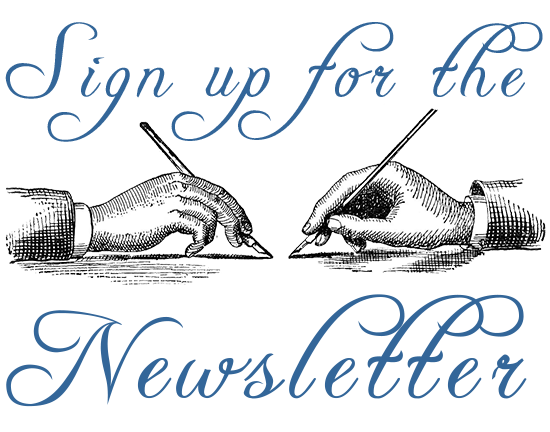Last Updated on July 27, 2022
Jerusha Hess’ “Austenland” (2013) centers on Jane Hayes (Keri Russell), a thirty-something Jane Austen devotee who is having difficulty in the dating world. The audience is led to believe that Jane’s primary problem is her all-consuming love for Austen’s romantic stories.
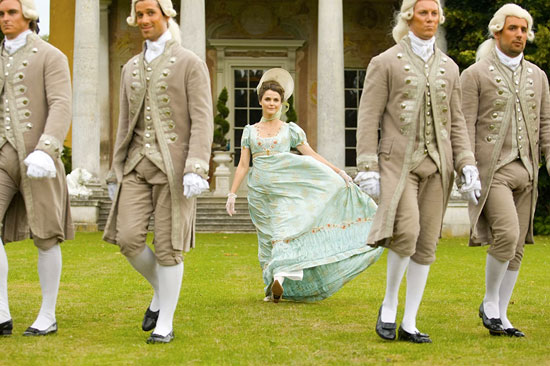
To help keep this site running: Willow and Thatch may receive a commission when you click on any of the links on our site and make a purchase after doing so.
In one scene, Jane is watching BBC’s 1995 “Pride and Prejudice” adaptation with her date. He nibbles provocatively at her neck while she’s distracted by the sight of a sodden Colin Firth walking onto the banks of the lake on his Pemberley estate.
“Austenland” follows Jane as she decides to become her own Austen heroine in a last-ditch effort to exchange modern spinsterhood for a love story written only in novels.
She books a trip to the eponymous resort where the clothing, the manners, and the men are all gloriously Regency-appropriate.
Transforming the fantasy of Regency-era romance into a tangible reality becomes a way for Jane to explore the possibility of achieving the happy ending she has read about while fulfilling her role as an aging woman in society.
If you enjoy this article, you’ll want to know about The Jane Austen Review. See the end of the page for information.
“Austenland” is an adaptation of the novel by Shannon Hale, and is AVAILABLE to STREAM.
Through its exploration of the aesthetic and societal pressures experienced by women as well as the male toxicity which reinforces them, “Austenland” (2013) highlights the deeply problematic gendered ageism that underlies society’s perception of relationships as women age.
The term “Gendered Ageism” addresses the intersectionality of age and gender bias, where women’s value decreases as they get older. Sophia Ahn and Amelia Costigan, both research fellows at the global non-profit Catalyst, report that “older women face marginalization based on ‘lookism,’ or gendered youthful beauty standards.”
Women are systematically pressured into believing their sexual arc takes place within a limited age bracket and must end in a relationship. Disillusioned with love, but doomed to seek it out, Jane Hayes is an example of the older woman living vicariously through a literary analog of a satisfying relationship.
Jane’s friend Molly (Ayda Field)–who is evidently, married, pregnant, and content herself–proposes a wager that dictates that Jane must “de-Austen” her life if she realizes on her trip that her fantasy is not as good as she imagines.
Jane does realize how deceptive Jane Austen’s happy endings are when she attempts to find love at the resort, only to fall victim to the toxic masculinity captured in characters like Pride and Prejudice’s (1813) Fitzwilliam Darcy and Sense and Sensibility’s (1811) John Willoughby. In effect, Jane must determine whether to settle for less than her ideal or choose spinsterhood after personally experiencing the insidiousness of gendered ageism and gaslighting at her ideal resort, Austenland.
The fear of “spinsterhood” transcends cultural periods. In the twenty-first century, Jane Hayes is denigrated for being an “older” unmarried woman. In one particularly cringe-worthy scene, Jane’s male co-worker makes unwanted advances and says: “I chose you for a good reason. Thirty plus, clock’s ticking. I’m as good as it gets.”
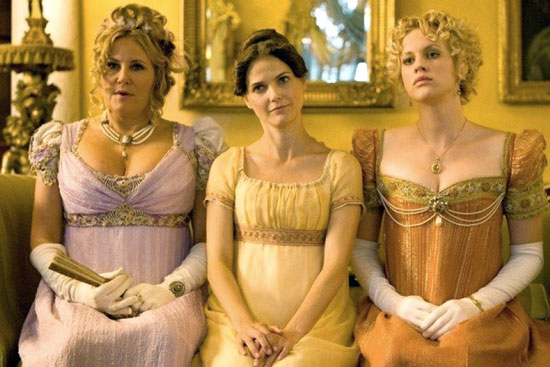
During the first dinner at Austenland, the younger Lady Amelia Heartwright comments: “At your age, no husband, no kinder?” Jane can only leave the room in shame at being so called out.
The spinsters in Austen’s works are viewed with similar disapprobation. Charlotte Lucas from Pride and Prejudice, for example, is a 27-year old woman known throughout Hertfordshire as a spinster before she marries the silly Mr. Collins because “it was the only honourable provision for well-educated young women of small fortune, and however uncertain of giving happiness must be their pleasantest preservative from want.”
Emma Woodhouse, a young and vivacious woman from Austen’s Emma (1815), tells her friend Harriet that she has very little intention of marrying at all. To this, Harriet proclaims “Ah, so you say; but I cannot believe it…Dear me!– it’s so odd to hear a woman talk so!”
Jane Austen herself never married before dying at the age of forty-one. Her choice to never marry is nearly as heavily researched as her impressive oeuvre. The volume of scholarly work and commentary on spinsterhood is indicative of our cultural preoccupation with women’s marital state.
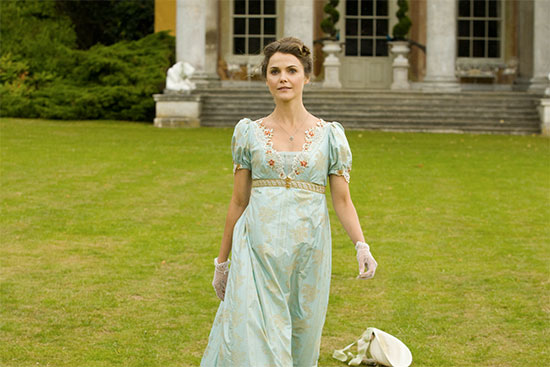
For many researchers, “Master of the Marriage Plot” is a dubious sobriquet for Jane Austen because she, herself, never married. George Austen was a parson who could not afford a dowry for either of his daughters. Without independent means, Austen was obliged to find and accept any man that could support her, much like her character Charlotte Lucas.
Historians Roy and Lesley Adkins write that unmarried women were “long referred to by the disparaging term ‘old maids’” and that “unmarried women could face a life of penury– even those from affluent families.” Perhaps this pervasive belief among her peers is the reason why Austen initially accepted a proposal in 1802 from her family friend, Harris Bigg-Wither. Nevertheless, she rejected him by the next morning and sacrificed the prospect of financial security.
Thereon, Jane Austen and her unmarried sister, Cassandra, “relied on the hospitality of friends and family until they were permanently relocated to a cottage in Chawton, Hampshire, belonging to her brother Edward Austen-Knight” (“Jane Austen Biography”).
Some Austen readers question whether Jane Austen could really have led a gratifying life as a woman earning her own bread. Jane Hayes, too, grapples with a sense of discontent in life despite being a professionally successful woman with an apartment and enough money to travel.
In a recent article, Washington Post columnist, Jamie Stiehm bemoans that a “short life and spinsterhood hardly seems fair for the author of Pride and Prejudice,” as if remaining single is more a tragic defeat than a calculated decision.
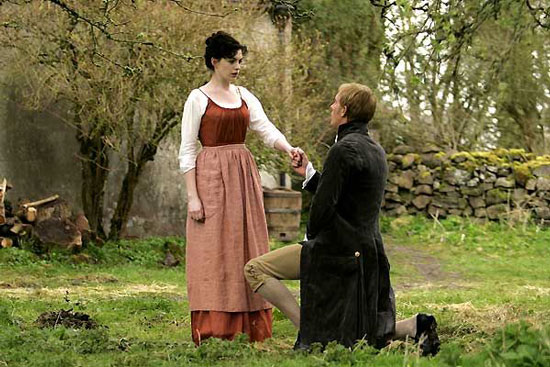
The biographical film Becoming Jane (2007) aggrandizes Jane Austen’s brief acquaintance with the Irish politician, Tom Lefroy, from 1795 to 1796 in a bald attempt to make Jane the romantic heroine she never was. We will never fully know Austen’s personal sentiments regarding love and marriage. However, the marriage plots throughout her novels prove that in the nineteenth-century matrimony was considered the apex of the female experience and that women were bound to settle down or otherwise suffer the consequences of singledom.
The vexed relationship between age and marriage was well known to Austen who in Persuasion (1818) explores this through the character of Anne Elliot. Anne is largely disregarded as a marriageable prospect due to her age and faded youth.
Harking back to Costigan’s commentary on “gendered lookism,” Anne’s “early loss of bloom spirits” is constantly remarked upon by her family, and even by the man she loves–Captain Frederick Wentworth. At one point, Anne’s sister Mary Musgrove tells Anne that Captain Wentworth admitted that he found her altered beyond his knowledge. Anne can only reflect on how “the years which had destroyed her youth and bloom had only given him a more glowing, manly, open look.”
As a woman in her late twenties, Anne is progressively shifting outside the marriageable bracket. However, the older Captain Wentworth returns from sea as a desirable partner for any young woman. Indeed, he even jokes that he’s ready to make a foolish match with “anybody between fifteen and thirty.”
In a similar way – despite the passage of hundreds of years – the women in “Austenland” are also conscious of their perceived attractiveness in relation to their age.
Jane’s first friend at the resort, the older Miss Elizabeth Charming (Jennifer Coolidge), is seen to disguise her own age with gorgeous gowns and heavy out-of-era makeup. There is a later scene where Miss Charming gives Jane a complete makeover, scored by Kim Carnes’ “Betty Davis Eyes.”
Of the three guests, only Jane and Elizabeth are seen to actively try to improve their appearances to attract the men at the resort because they lack Lady Amelia’s advantageous youthfulness. Jane is especially pressured to improve her physical attractions because she has been introduced at the resort as “Jane Erstwhile, an orphan of no fortune, who we’ve taken in out of the goodness of our hearts.”
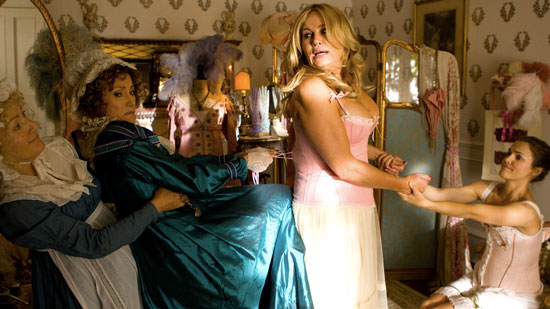
Her character’s lack of fortune means she must depend on other means to attract a suitable partner. And given her age, the task of attracting this suitable partner is doubly challenging.
In one sense, Elizabeth’s financial advantage renders her makeover a pleasurable diversion. Jane’s, however, is but one determined element in an exhausting pursuit of love.
In the context of Jane Austen’s novels, a wealthy woman has more liberty to choose. Lady Catherine de Burgh hasn’t married again after the death of her husband, Sir Lewis. There is no danger of the ownership of Rosings Park transferring to her partner, since it is her daughter Anne that is the heiress. Her remarrying would pose no risks to the estate, yet being a woman of fortune and a dowager, no less, she has the privilege of choosing a partner at her leisure or not choosing one at all.
Jane Hayes forgives toxic male behaviors as she single-mindedly pursues the ideal partner. Jane is first introduced to Mr. Henry Nobley (JJ Feild) and the subsequent relationship between them is analogous to that of Pride and Prejudice’s Elizabeth Bennet and Fitzwilliam Darcy. Jane is convivial where Mr. Nobley is sharp when he isn’t otherwise taciturn.
Jane asks him if he enjoys dancing, to which he responds “not particularly” without so much as a smile or momentary glance in her direction. And like Elizabeth, Jane quickly surmises a person’s character. Mr. Nobley’s curt refusal to engage in conversation with Jane resembles Mr. Darcy’s snub of Elizabeth at the Meryton Assembly. Elizabeth “remained with no very cordial feelings towards him” upon overhearing Mr. Darcy’s claim that “she is tolerable ” but not handsome enough to tempt him.
Mr. Nobley and Mr. Darcy exhibit the most prevalent form of toxic masculinity by depending on a woman’s emotional labor within the context of a romantic relationship. Men are inundated with false ideals of what it means to be masculine from popular culture. These ideals might even be further reinforced by women’s expectations for a male partner.
Jane is clearly fixated on the Darcy character and enters Austenland thinking the quintessential partner is someone synonymous with her favorite fictional man. After all, Austenland intrigues her chiefly because it guarantees a happy ending with an Austen hero.
The male actors at the resort play into the women’s expectations of male desirability through emotional withholding or flaunting macho physical attractions, like the muscular Captain George East (Ricky Wittle). As a result of internalizing these false expectations – even via an experience seemingly as harmless as playing a role – some men do not learn how to self-regulate their emotions because finer feelings have been demarcated as chiefly feminine, and therefore outside their emotional range.
Mr. Darcy later struggles to make his sentiments known to Elizabeth because he recognizes the “inferiority of her rank, of its being a degradation.” Mr. Darcy still proposes and Elizabeth observes that “he had no doubt of a favorable answer,” perhaps because he knows his proposition is a compliment to a woman of lower rank. His proposal, ripe with clumsy language, proves Mr. Darcy’s emotional impotence.
Elizabeth is compelled to incite Mr. Darcy’s humanity by speaking of his role in Jane Bennet’s heartbreak at her separation from Charles Bingley and of what she considers Wickham’s plight as a penniless soldier. Still, Mr. Darcy is confounded by her refusal and unable to grasp the nuances of human emotion.
Mr. Nobley’s role as the resident Darcy adds a layer of complexity to the emotional schema of “Austenland.” Jane doesn’t learn until the end of the film that Henry Nobley is a history professor who agreed to wear a costume as a favor to the Lady Catherine de Bourgh figure, Mrs. Wattlesbrook (Jane Seymour), who is also his aunt and the owner of the resort. But during a game of croquet, Jane learns that Mr. Nobley’s Darcy-like stoicism originates from a bitter breakup with a girlfriend who left him for his best friend.
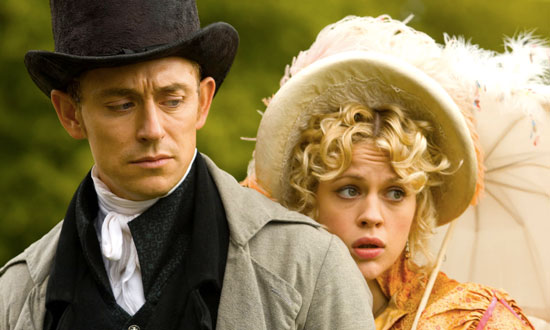
Similar to Mr. Darcy, Mr. Nobley is inept at verbalizing complex emotions. He pulls Jane aside one evening when he sees her leaving the barn where she met the resident farmer, Martin. He sternly remarks that “it’s not proper in this particular time, or any time, for a lady to be alone after dark, let alone cavorting with the servants,” to which Jane naturally takes offense.
Soon thereafter, Mr. Nobley hurries to Jane as she fights off Mr. Wattlesbrook’s (Rupert Vansittart) lecherous grasp and offers to see her safely to her room. He tentatively places a reassuring hand on her shoulder and the tension from the previous scene is suddenly assuaged. Mr. Nobley vacillates between dispassionate proprietary and friendly intimacy. It’s no wonder Jane grows more frustrated and confused the longer she stays in Austenland.
Jane’s second major relationship with the unreserved farmhand, Martin (Bret McKenzie), demonstrates a vicious form of emotional immaturity called “gaslighting,” an “elaborate and insidious technique of deception and psychological manipulation” that Martin uses to undermine Jane’s confidence (Duigan).
Like Mr. Nobley, Martin’s intentions with Jane are difficult to interpret. Martin is charming during the early stage of his flirtation with Jane: he takes her out on a boat, sets up a picnic, and shares kisses and embraces her. One thinks of Sense and Sensibility’s Marianne Dashwood and John Willoughby: a woman prone to idealization and “a young man of good abilities, quick imagination, lively spirits, and open, affectionate manners.”
During the film, Martin’s feelings sour when he sees Jane enjoying attention from the actors at the resort. He projects his own humiliation onto her and makes her feel foolish for enjoying herself: “I thought you weren’t into that stuff? Well, I’ve never really been able to respect the kind of women that come here. I guess I was fooling myself that you weren’t one of them.” Jane’s confidence is shattered when Martin says he didn’t realize they were “going steady,” although his behavior up to this point suggested a promising progression in their relationship.
Gaslighters aim to make their victims question their own perceptions and doubt their own self-worth. Despite his blatant attempt to make her feel foolish, Jane returns again to Martin.
Marianne behaves similarly when she pines for Mr. Willoughby on the rain-soaked hills of Somersetshire despite his blatant rejection of her in London. The letter he sends to her the morning after his rejection suggests that she has imagined an attachment and that he is “quite at a loss to discover” at what point he could be so unfortunate as to offend her. He entreats her forgiveness of what offense he thinks was “perfectly unintentional.”
Later in the film, Jane learns that Martin was paid to act as her suitor. Mrs. Wattlesbrook sends him to diffuse the situation in case Jane takes legal action after her assault from Mr. Wattlesbrook. Even with his secret exposed, Martin has the gall to say that “romances have bloomed on stonier ground,” which effectively minimizes how badly he has treated Jane. Viewers and readers want to yell at Jane and Marianne for their history of forgiveness, but this damaging habit of minimizing emotional abuse of any degree is all too common, specifically among women.
Jane’s final de-Austening of her life allows her to choose Mr. Nobley with a clear perception of who he is as a romantic partner. Mr. Nobley races to the airport to confess his genuine feelings for Jane, who has begun to dismantle her idealized notions of love. Here is where Mr. Nobley literally sheds the pretense of romanticized Austenism by taking off his greatcoat and throwing it to the ground.
Disenchanted with romance, Jane flies home and packs away the remnants of her obsession, including a life-sized cardboard cut-out of Colin Firth’s Mr. Darcy, and settles into the idea of living her life as a reformed Austen addict and modern-day spinster. That is, until her romantic hero literally comes knocking on her door.
Nobley’s appearance in Jane’s apartment is, itself, a convention of the genre that Austen perfected. Ultimately, Jane chooses Henry Nobley, who comes to her apartment not as an actor portraying Mr. Darcy, but as a history professor who volunteered to help his aunt. Jane’s awakening takes place within the sentimental structures that condone misogynistic behavior; however, “Austenland” softly rejects the notion that ageism and toxic masculinity should define a woman’s dating experience.
Mr. Darcy – and by extension, Mr. Nobley – is the consummate Austen hero because he takes initiative to correct his personal defects and effectively matures out of his toxic masculinity.
Mr. Nobley rushes to make reparations at the airport and confronts Jane, out of costume and vulnerable. Mr. Darcy quietly makes amends for his conduct by helping Lydia to marry and by reuniting Jane and Mr. Bingley. He admits that “his affections and wishes are unchanged” and one word for Elizabeth will silence him on the subject forever.
Mr. Darcy recognizes the extent of his bad behavior by giving Elizabeth the power to sever their connection indefinitely. Happily for him, she accepts his second proposal, and he tells “her of feelings which, in proving of what importance she was to him, made his affection every moment more valuable.” Each woman’s happy ending is a comforting thought, but their preceding tribulations are anything but.
Marriage is paramount for the poor and orphaned Jane Erstwhile, but Jane’s purpose at the resort is more than fulfilling a love plot for her Austenian persona.
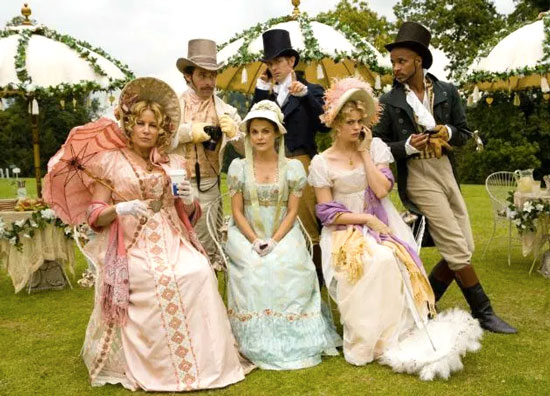
At the beginning of the film the audience witnesses Jane grow up under the influence of her favorite novel Pride and Prejudice, so one must wonder how deeply media roots itself in a person’s psyche. Jane is intrinsically prone to seek out the life path she has normalized from a young age.
In the same way that people shape their behavior according to gender norms, so do they design their lives in alliance with prescriptive milestones, such as marriage. When viewed objectively, Jane’s commitment to the romance narrative seems untenable given her independence and progressive education as a modern woman. Her persistent search for love can better be explained by an inherent need to complete a cultural ritual that has been central to modern ideas of family and prosperity.
As much as Jane likes to think she is living her fantasy at Austenland, much of her experiences mirror the same conflicts she was handling in her twenty-first century life. She endures toxic behavior from Mr. Nobley and Martin just as she endured toxic behavior from men like her co-worker, who earlier in the film rudely reminded her of her “ticking clock.”
In a letter to her niece Fanny Knight, Jane Austen wrote, “single women have a dreadful propensity for being poor—which is one very strong argument in favour of Matrimony” (Bailey). Jane Hayes is an independent working woman, so why does she feel compelled to search for a partner at Austenland?
We may have moved on from empire silhouettes and cravats, but how much have our sexist and ageist prejudices progressed since the nineteenth century? While stylistic elements like fashion and linguistics adapt as the years pass, the mode-of-thought surrounding how women should be treated remains woefully antiquated. Arbitrary expectations, like marrying at a certain point in life, have become ingrained in our social makeup.
“Austenland” may not initially be taken seriously, but it provokes a host of questions about how we internalize social norms and consequently perpetuate them. It is worth recognizing and appreciating the gravity that underlies a film with glistening shirtless men in powdered wigs and tight breeches.
Kailey Rhone makes use of her English degree working as a production editor in the world of academic publishing. She can be found rewatching “Downton Abbey” and sipping on another cup of Earl Grey when she’s not writing about the intersection of feminism and Jane Austen’s novels. Her work can be found in Persuasions.
This article originally appeared in The Jane Austen Review, a nascent public humanities project that emerged from student-faculty collaboration at Pacific Lutheran University (Tacoma, WA). It is coordinated by Abigail Kunkel, Adela Ramos, and Madeline Scully with the goal of creating a digital home for non-academic and academic readers and writers interested in engaging with Jane Austen and her afterlives.
The Jane Austen Review publishes thoughtful review essays about Jane Austen retellings (fan fiction, fiction, web series, TV series, film), material culture (crafts, fashion, merchandise), or other manifestations of Austen afterlives, such as literary tourism. Their only requirements are that review essays make connections between Austen’s time and our own and that they are accessible to the general public.
They approach the editorial process with a workshop spirit, offering several rounds of feedback and guiding writers through the revision process because what excites them most is to share ideas and engage in conversation. You can pitch an idea by sending a DM via the Twitter handle @janeatplu or by sending an email to thephaetonreview at gmail dot com.
If you enjoyed this post, wander over to The Period Films List. You’ll especially like the Best Period Dramas: Regency Era List.

